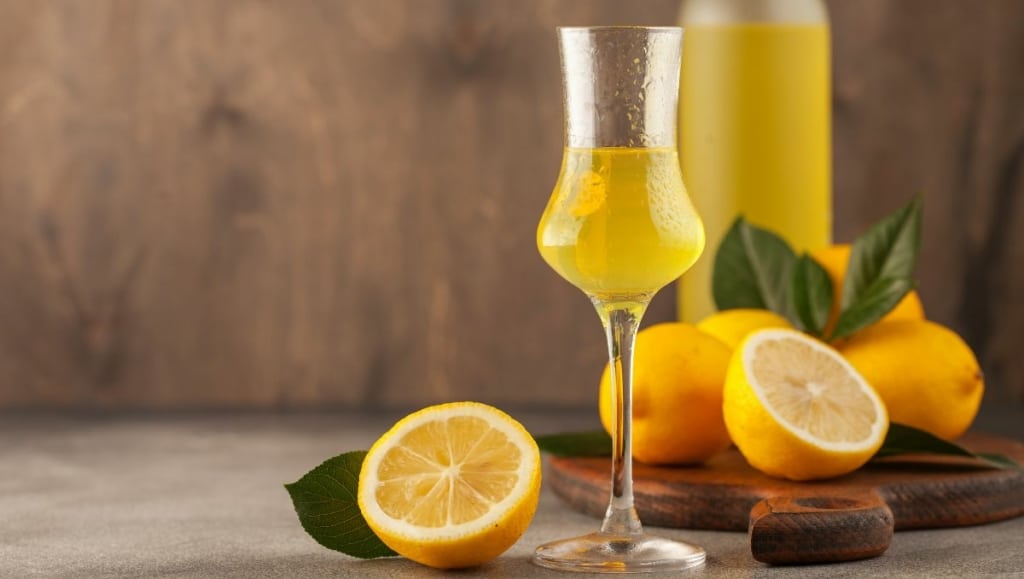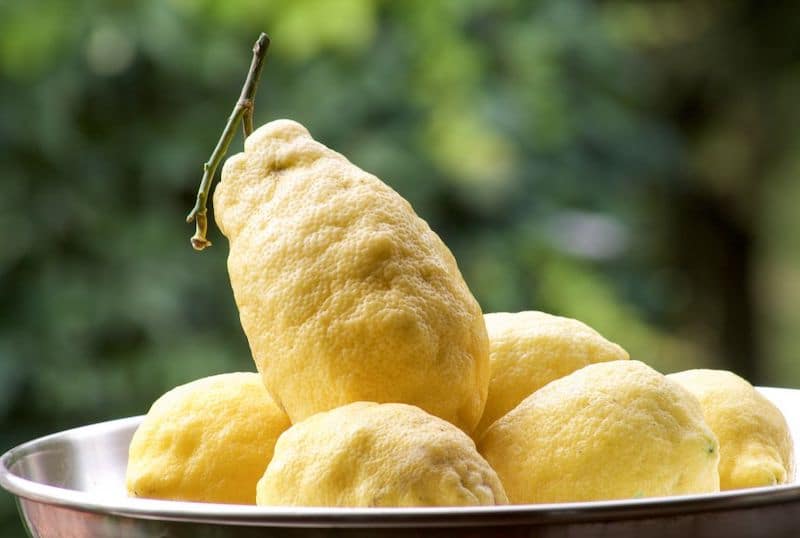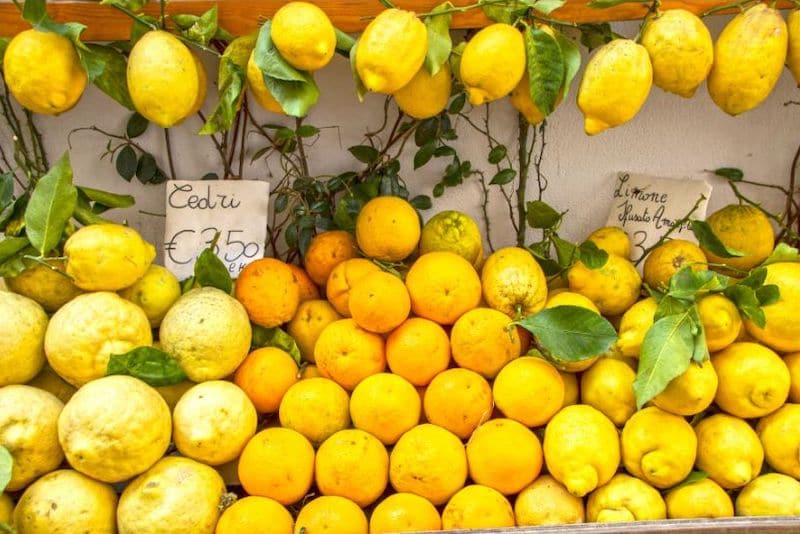Limoncello is one of the best-known lemon products from Italy and a symbol of the Amalfi coast. The zesty, fresh, and fragrant liqueur is famous all over the world, and there's almost no way around it when one is in Italy.
Even though Limoncello is a regional delicacy, it's served everywhere in the country. Also, many Italian families have their own, more or less secret, recipe to make the best Limoncello liqueur.
In Italian restaurants, the liqueur is often served as a digestif or used in desserts and other sweet treats. And also, in cocktails, the lemon liqueur does deliver.
Time to have a look at one of the most consumed liqueurs and learn how you can make a delicious Limoncello at home.

What is Limoncello?
Limoncello is a famous Italian digestif, mainly produced in the southern part of the country.
In northern Italy, Limoncello is sometimes also called Limoncino. But don't be confused; they are both the exact same thing.
Limoncello is made of lemon zest macerated in alcohol to extract flavor and essential oils. Authentic Limoncello always uses a specific type of lemons that typically grow on the Amalfi coast or on the island of Capri.
The amount of alcohol in Limoncello varies widely. You can find bottles between 20% and 35% ABV.
The taste of Limoncello
Limoncello is a relatively sweet liqueur with an intense aroma and flavor of lemon. There's only a little tartness to the liqueur, just enough to give it the required kick.
The taste is best described as deliciously sweet (not overly sugary, though) and spiked lemon syrup. That characteristic also makes it dangerously easy to drink.
How to make Limoncello
Limoncello is made from the peel of lemons, not its juice. Therefore it's important that the lemons used to produce the tart yet sweet liqueur are untreated.
The lemon peel -also called zest- should be cleaned before the maceration process begins. That includes removing the bitter white pith from the peels.

In the next step, the fragrant cleaned peels are macerated in alcohol for about one week. During this procedure, the lemon peels release their flavor and essential oils.
After all the oils are extracted the alcohol gets mixed with syrup. Note that the sugar-to-water ratio in the syrup and the temperature affect the clarity and viscosity of the resulting Limoncello.
Finally, the Limoncello is ready to be bottled. The sealed bottles should sit in a cold and dark place for about one month before the Limoncello is ready to be consumed.
Lemons from the Amalfi coast
Original Limoncello recipes only use lemons harvested in the region between Vico Equense and Massa Lubrense or on the island of Capri.
Those lemons not only look different, but they also only grow in a singular climate. So close to the sea and carefully protected from cold winds, the lemons develop a distinct flavor and taste.

It's also noteworthy that the peel of these lemons is way thicker than what we are used to.
The Amalfi lemon as a whole is massive, but only due to enormously thick lemon peels. Plus, these lemons have an intense aroma from their essential oils.
How to use Limoncello
raditionally, Limoncello is served as a digestif after a good meal. In Italy, it's not uncommon that a restaurant even serves a little jug of Limoncello (250ml) and some shot glasses - free of charge.
But there are many more ways to drink and use Limoncello. You can serve it on the rocks, in cocktails, drizzle it over dessert, and even soak sponge cakes to infuse them with lemon flavors.
In cocktail recipes, it appears rarely. But you can find some great recipes using Limoncello as an alternative way to sweeten a cocktail; - As a replacement for simple syrup, so to say.
How to keep it fresh
Like most liqueurs, Limoncello is best kept in cold and dark places. Ideally, you store it in the fridge.
That will also guarantee that the liqueur is properly chilled and ready to be served. Adding ice would only dilute the drink unnecessarily.
History of the Limoncello
The history of Limoncello is foggy and heavily disputed. It's unclear who, where, and when the famous lemon liqueur was invented.
But still, the different stories are worth a mention.
Capri, Sorrento, and also Amalfi have different narratives about the history of Limoncello.
Capri
Although some claim that Limoncello is way older, the first written reference dates back to the 20th century. That also matches one of the most popular and realistic stories.
In the early 1900s, Maria Antonia Farace owned and cultivated a large garden with lemons and oranges on Capri.

When her nephew opened a bar, the bar menu featured a lemon liqueur made with nonna's old recipe.
The lemon liqueur quickly became a specialty of the bar. Ultimately his son, Massimo Canale, also a native Capresan, decided to produce the liqueur in larger quantities and registered a trademark for it in 1988.
Sorrento
The story from the Sorrentine coast is less detailed. It's said that most families of Sorrento always made sure to offer some Limoncello to special guests.
The Limoncello recipe there is a "traditional family recipe", but no further information is known.
Amalfi
The stories of the Amalfi region are even vaguer and indicate that the original recipe is way older.
That might as well be true. However, as there's absolutely no (written) evidence of this, it's likely that Limoncello, as we know it today, was invented in the early 1900s.
Making Limoncello at home
Producing your own Limoncello isn't as difficult as you might think. Technically, everyone can make a great Limoncello in their home kitchen.
The only problem you might face is getting the right lemons. Italy is starting to export Amalfi lemons, but it's still hard to get your hands on them.
If you can't get them, though, you can use regular lemons, as well. The resulting liqueur will still taste amazing.
However, the macerating process can take a little longer when making the liqueur at home compared to industrial production.
Therefore, I recommend macerating the lemon peels for an extended time. In our recipe, it's 30 days instead of only seven days.

Ingredients
- 10 Lemons
- 750 ml Grain alcohol
- 4 cups Water
- 3 cups Sugar
Instructions
- Wash the lemons in warm water and gently clean them with a brush. Since Limoncello is made from lemon peel, you want to clean it from all possible insecticides.
- Pour the grain alcohol into a water jug and add the lemon peel of 10 lemons. Cover it and let the mix macerate for about one month.
- After one month, cook the water with the sugar and add it to the mix once the sugar has dissolved. Cover the jug and leave it for another month.
- Strain your Limoncello Liqueur into bottles and store them in the freezer (not in the fridge) before serving.
